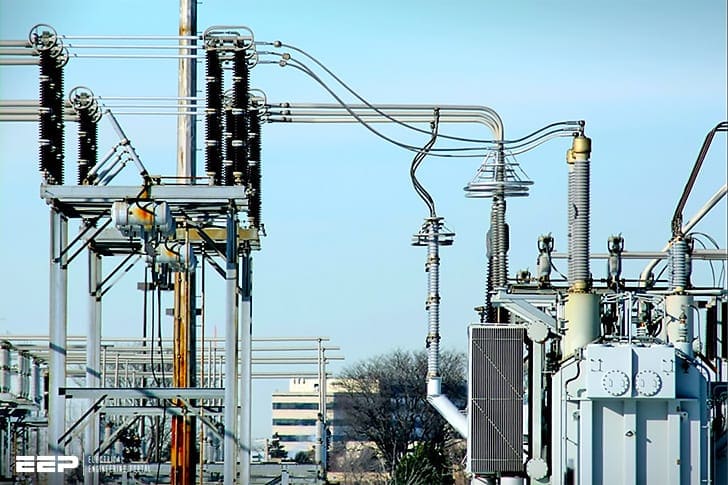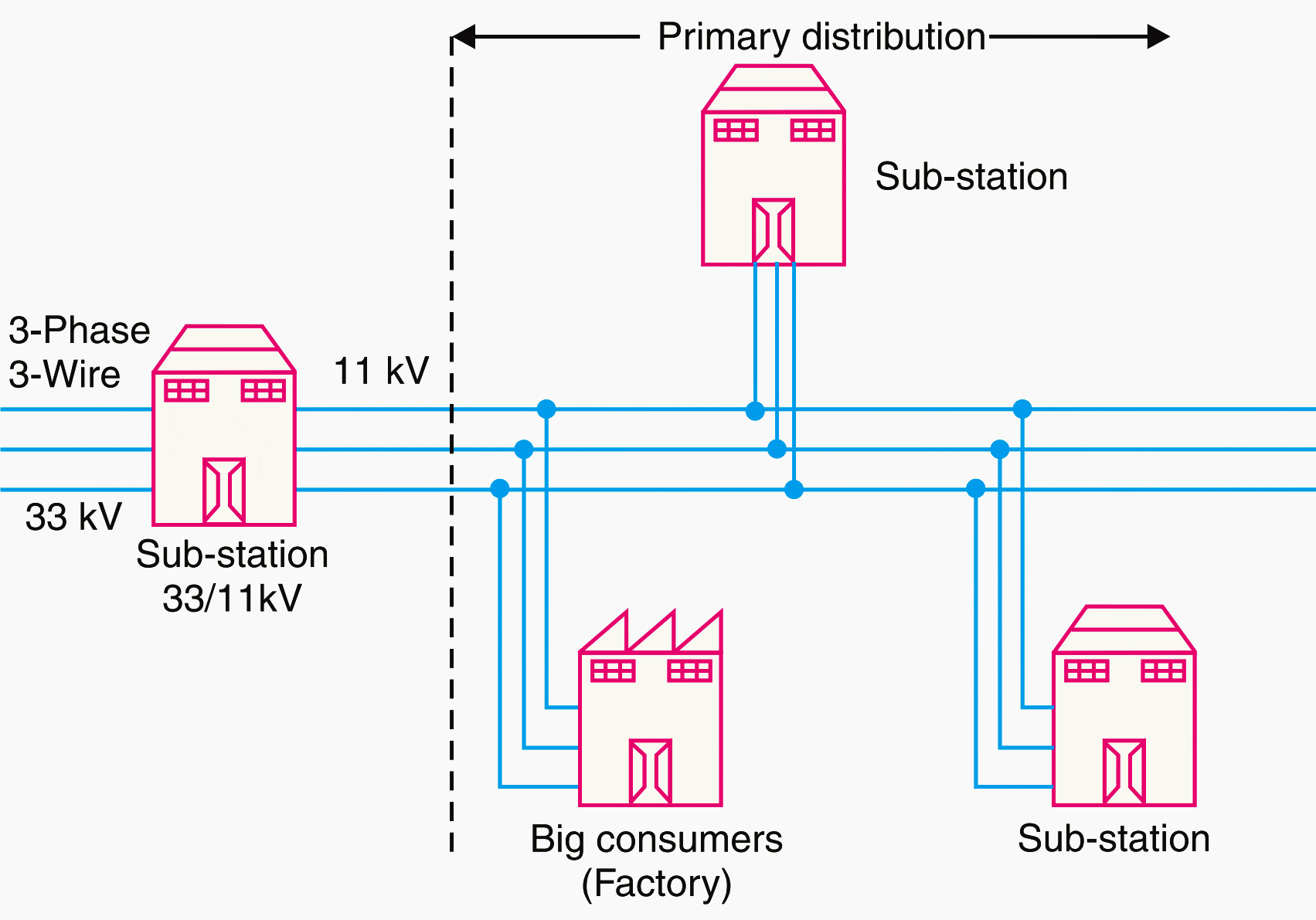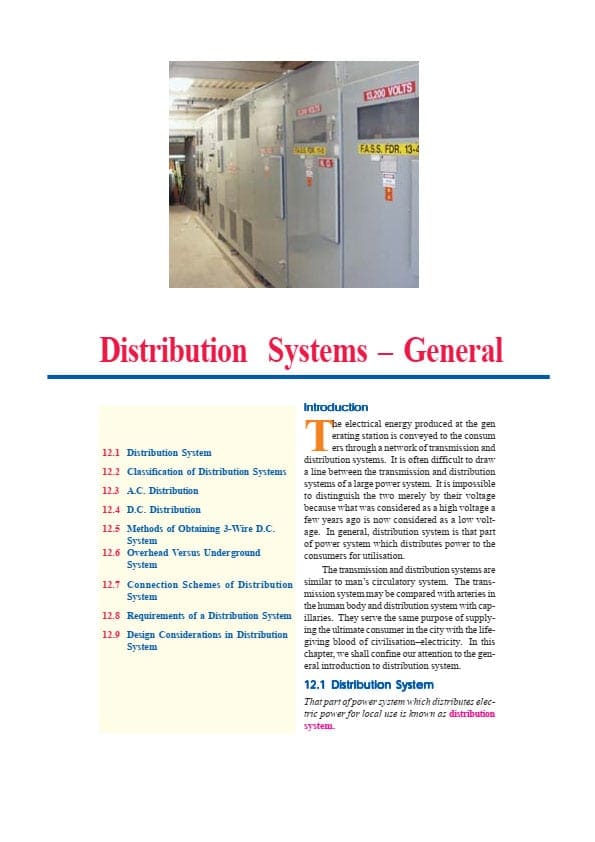Transmission & Distribution Systems
The transmission and distribution systems are similar to man’s circulatory system. The transmission system may be compared with arteries in the human body and distribution system with capillaries. They serve the same purpose of supplying the ultimate consumer in the city with the life-giving blood of civilization–electricity.

In this guide, we shall confine our attention to the general introduction to distribution system.
What is Distribution System?
That part of power system which distributes electric power for local use is known as distribution system.
Figure 1 shows the single line diagram of a typical low tension distribution system.

1. Feeders
A feeder is a conductor which connects the substation (or localized generating station) to the area where power is to be distributed. Generally, no tappings are taken from the feeder so that current in it remains the same throughout.
One of the main consideration in the design of a feeder is the current carrying capacity.
2. Distributor
A distributor is a conductor from which tappings are taken for supply to the consumers. In Figure 1, A B, BC, CD and DA are the distributors.
The current through a distributor is not constant because tappings are taken at various places along its length.
While designing a distributor, voltage drop along its length is the main consideration since the statutory limit of voltage variations is ± 6% of rated value at the consumers’ terminals.
3. Service mains
A service mains is generally a small cable which connects the distributor to the consumers’ terminals.
Classification of Distribution Systems
A distribution system may be classified according to:
1. Nature of current
According to nature of current, distribution system may be classified as:
- d.c. distribution system
- a.c. distribution system
Now-a-days, a.c. system is universally adopted for distribution of electric power as it is simpler and more economical than direct current method.
2. Type of construction
According to type of construction, distribution system may be classified as overhead system and underground system. The overhead system is generally employed for distribution as it is 5 to 10 times cheaper than the equivalent underground system.
3. Scheme of connection
According to scheme of connection, the distribution system may be classified as:
- Radial system
- Ring main system
- Inter-connected system.
Each scheme has its own advantages and disadvantages and those are discussed later.

12.3 A.C. Distribution
Now-a-days electrical energy is generated, transmitted and distributed in the form of alternating current. One important reason for the widespread use of alternating current in preference to direct current is the fact that alternating voltage can be conveniently changed in magnitude by means of a transformer.
Transformer has made it possible to transmit a.c. power at high voltage and utilize it at a safe potential. High transmission and distribution voltages have greatly reduced the current in the conductors and the resulting line losses.
The a.c. distribution system is classified into: primary distribution system and secondary distribution system.
Primary distribution system
It is that part of a.c. distribution system which operates at voltages somewhat higher than general utilization and handles large blocks of electrical energy than the average low-voltage consumer uses.
The voltage used for primary distribution depends upon the amount of power to be conveyed and the distance of the substation required to be fed.
Figure 2 (above) shows a typical primary distribution system. Electric power from the generating station is transmitted at high voltage to the substation located in or near the city. At this substation, voltage is stepped down to 11 kV with the help of step-down transformer. Power is supplied to various substations for distribution or to big consumers at this voltage.
This forms the high voltage distribution or primary distribution.
| Title: | The essentials of AC and DC power distribution systems – V.K. Mehta |
| Format: | |
| Size: | 1.40 MB |
| Pages: | 74 |
| Download: | Right here | Video Courses | Membership | Download Updates |



Hello
I am the operator of the transmission and distribution system
I have 15 years of work experience in transitional posts
Is it possible to co-operate?
Very good information sir